In this guide to Jerash, I will introduce you to the best preserved Roman city in the world. Jerash has ruins of epic proportions and stood the test of time and holds treasures troves waiting to be discovered.
The city is located in the north of Jordan and chases the ruins of Petra for the country’s most popular attraction. Walking through the streets will make you question if you’re on a film set or stuck in an ancient Google maps. In this guide to Jerash Jordan, we break down the intricate details of the city’s Greco-Roman ruins, along with useful information on visiting Jerash.
Recommended:
Written by Eve Edinburgh
Travel Talk Contributor
A Complete Guide to Jerash Jordan
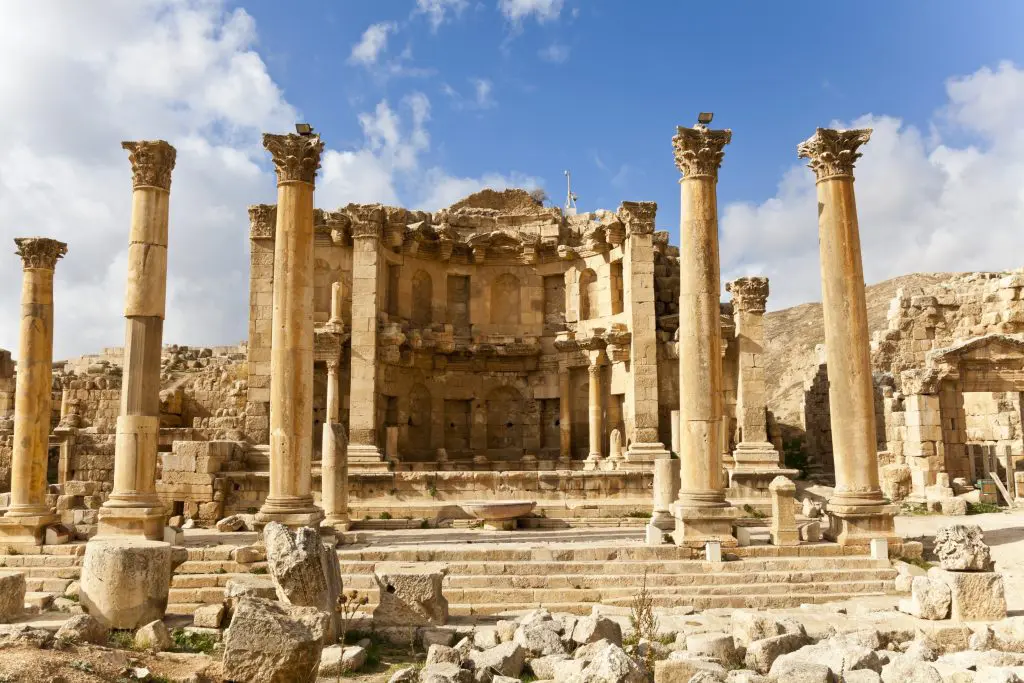
A Brief History of Jerash
Jerash, often dubbed the “Pompeii of the East,” boasts a history that stretches back more than 6,500 years. While its well-preserved Roman architecture garners much attention, the city’s story is deeply intertwined with a myriad of civilizations.
Originally known as Gerasa, Jerash flourished during the Hellenistic period under the Seleucid Empire before falling under Roman rule in 63 BC. What sets Jerash apart is its continuity of habitation; the site reveals layers of occupation from the Neolithic, through the Bronze and Iron Ages, to the Byzantine and early Islamic periods. Lesser-known is Jerash’s role as a bustling hub during the Umayyad Caliphate, when it served as a key trading center.
This rich tapestry of history is seen in its grand colonnades and temples. Also, Jerash reflects the subtle remnants of everyday life, from ancient road networks to residential quarters, offering a comprehensive glimpse into the past.
How to Get to Jerash
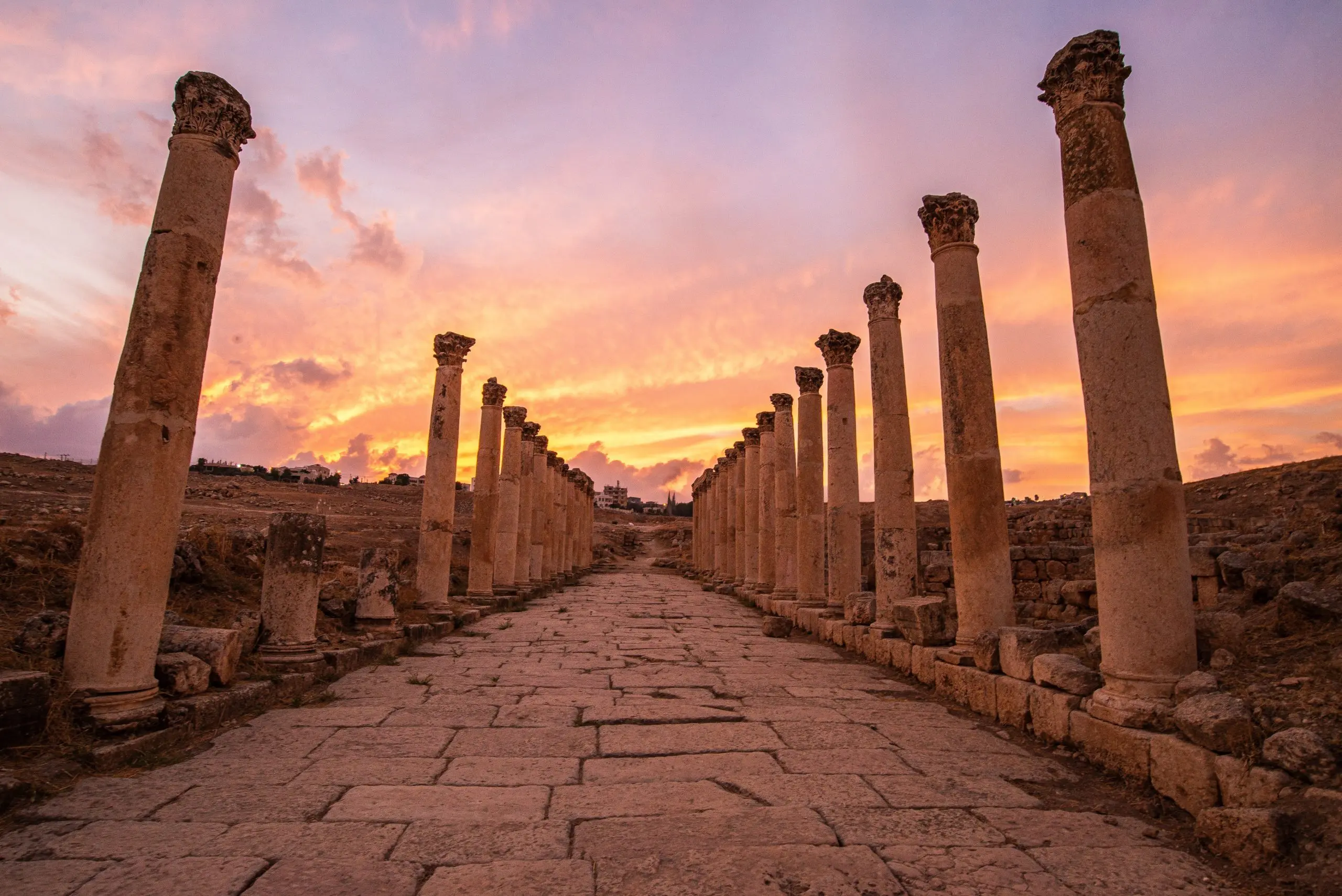
Getting to Jerash is easy, whether you’re starting from Amman or other parts of Jordan. Jerash is about 48 kilometers north of Amman. The most common route is via Highway 35, also known as the Jerash Highway. This road offers a scenic drive through Jordan’s green landscapes.
For public transportation, regular minibuses leave from Amman’s Tabarbour bus station. This is an affordable option and gives a taste of local travel. Shared taxis, known as “service” taxis, are quicker and convenient, especially during peak tourist seasons.
If driving, consider a detour to visit the ancient Ajloun Castle on the way.
Jerash Opening Hours
- Winter (November to April): 8:00 AM – 4:00 PM
Summer: 8:00 AM – 6:30 PM
April and May: 8:00 AM – 5:30 PM
During Ramadan: 8:30 AM – 6:00 PM
Best Things to See in Jerash
Nymphaeum
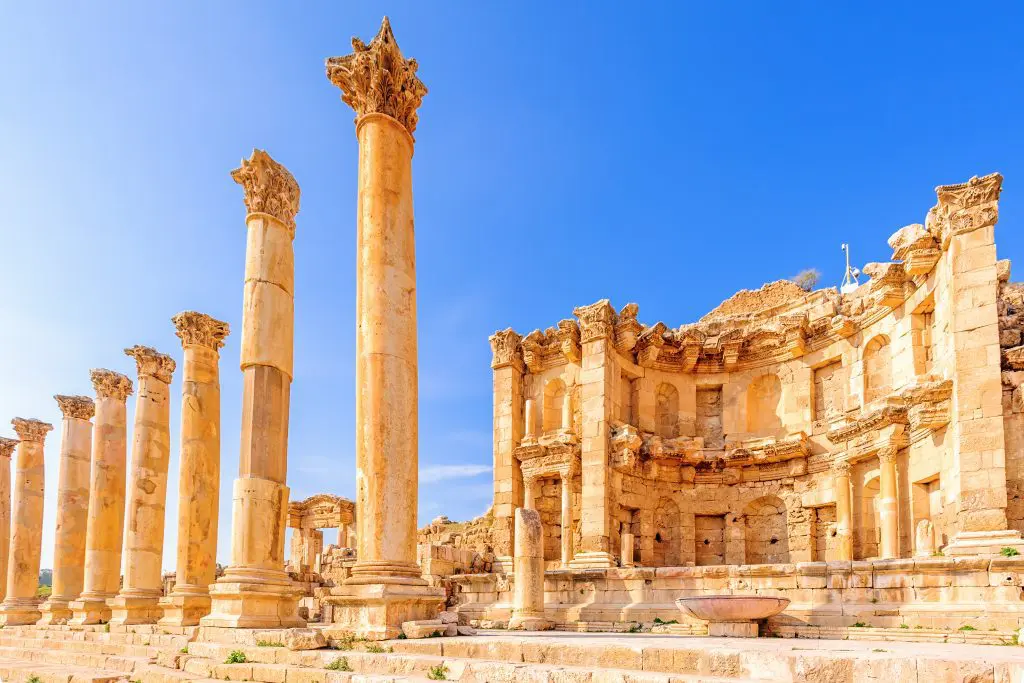
Built around 190/191BC, the Nymphaeum was once a working fountain that was designed as a water supply for the public. Comparable to Rome’s Trevi Fountain, these types fountains were dedicated to the water nymphs in ancient Greece and Rome. There still remains shadows of ethereal carvings, stone cut outs and beautiful artistry.
The Cathedral
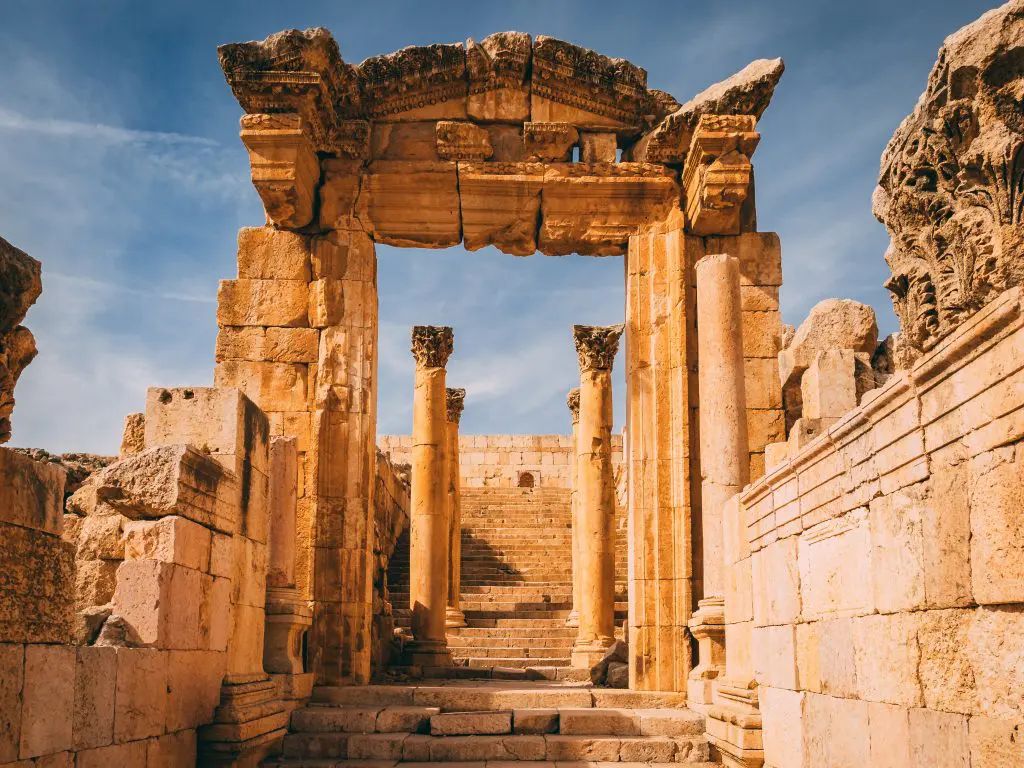
Following the Nymphaeum, you will find the entrance way to the Cathedral and what is an echo of magnificent architecture. In the Cathedral you will quickly notice Jerash society’s ideologies at conflict. Crowning the top of the stairs is the St Mary shrine whilst the structure itself was built on top of a Dionysus dedicated temple. It is a significant symbol of the cultural and religious shifts across Jerash’s history.
Cardo Maximus
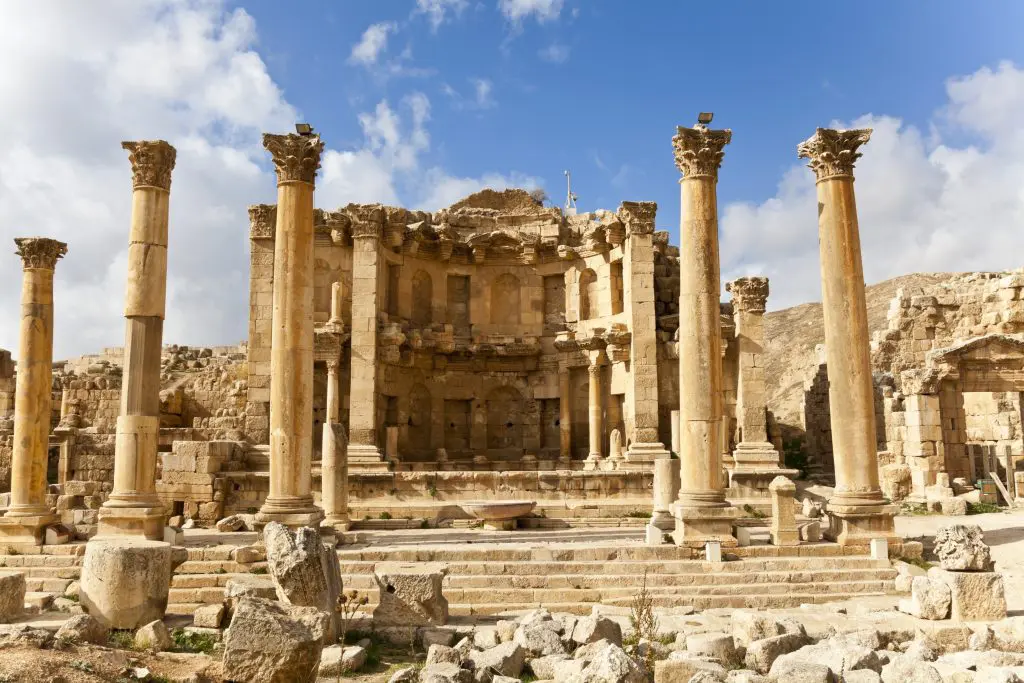
The Cardo Maximus road stretches 800m and, in classic Roman fashion, is straight as an arrow. Holding the characteristics of Roman life, you will notice drainage systems and marks from chariots that would have sped through the busy streets. Lining the road are pillars built at different heights and is theorised to align with the buildings that would’ve stood behind.
Guide to Jordan hack: You’ll definitely need your best walking shoes for this one.
Oval Plaza
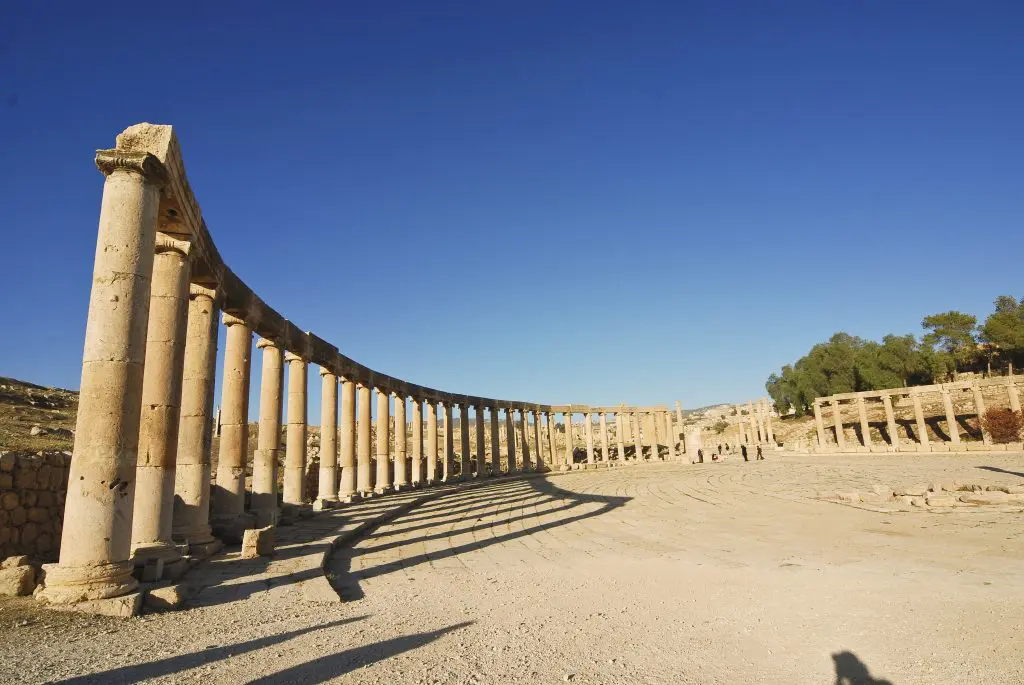
Ionic colonnade curves around at two axis and provides you a grand 360 experience to an ancient Roman plaza. Standing at its centre, it’s easy to envision the commotion of the city filling up the plaza.
Hippodrome
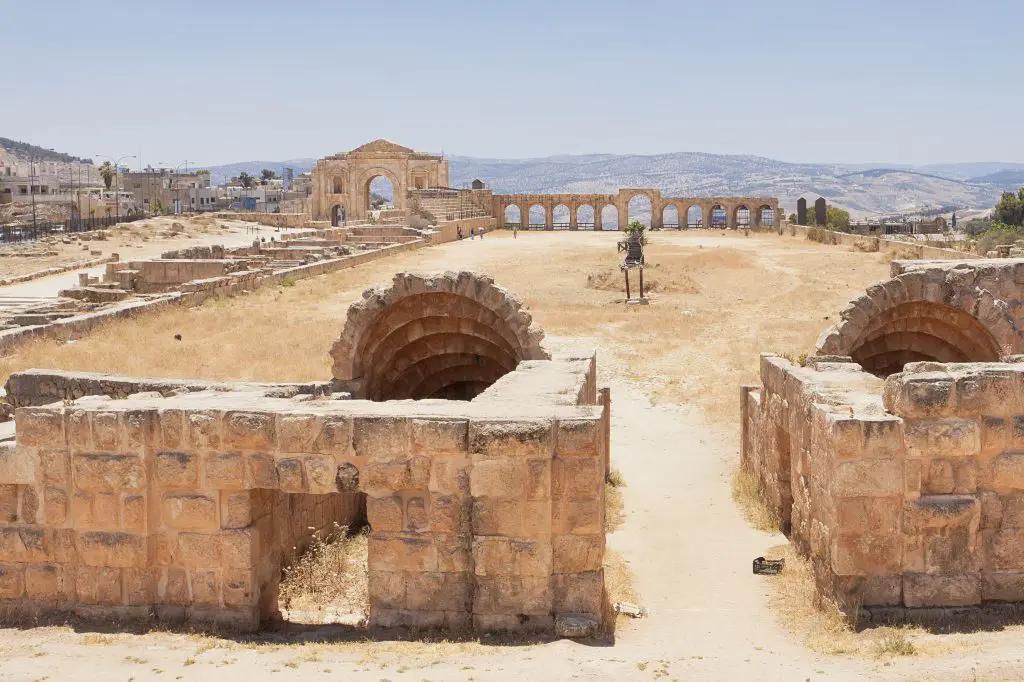
The Hippodrome was the stage for gladiators, chariot riders and other sportsman to show spectators what they’re made of. The arena could seat 15,000 people and today you can still watch horse drawn chariots races and immersive re-enactments.
The North Theatre
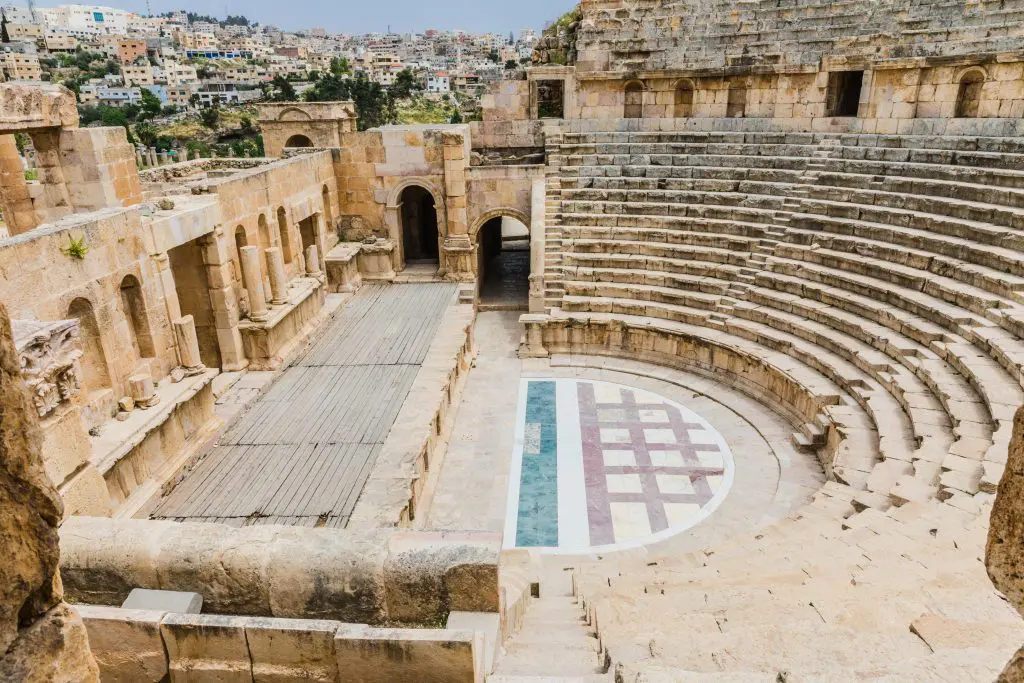
Built in 165 AD, the North Theatre is more compact between the surviving Jerash theatre. This one houses 14 rows and 2000 spectator and has experienced a series of expansions over the centuries. It’s been identified as a city council space as well as a stage for performances such as music and poetry. There are inscriptions on the seats visible today that signify representatives that give you a glimpse of the personalities that occupied the room.
The South Theatre
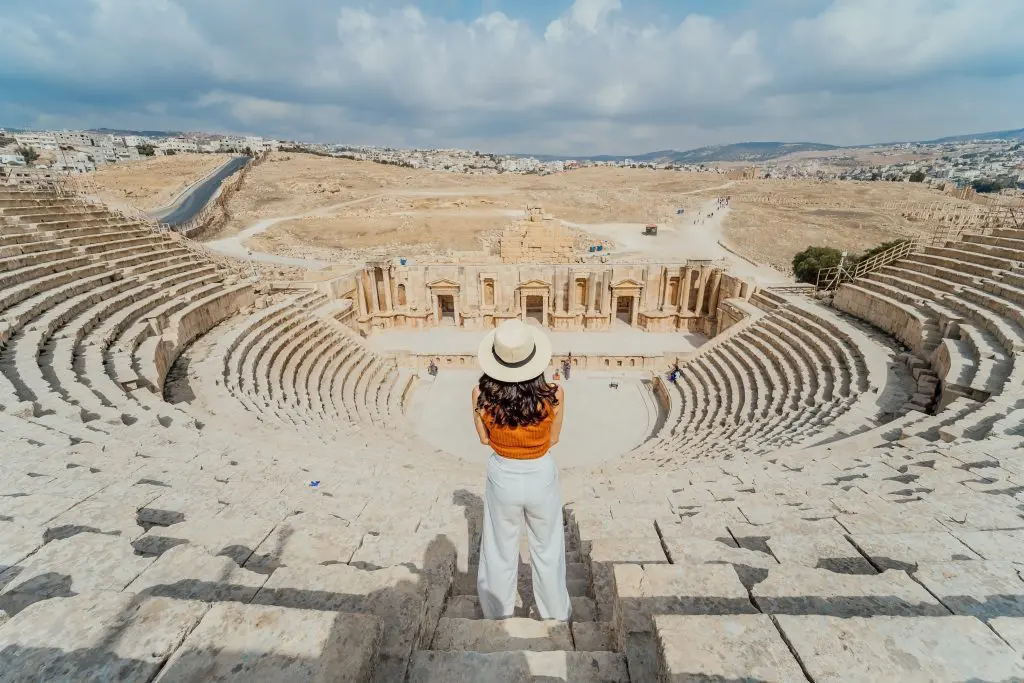
The larger of the two theatres, the South Theatre can seat about 3000 spectators. The South Theatre is a great opportunity to practice your vocal skills as the acoustics of carry particularly well for the benefit of spectators. The northern orientation also cleverly shields the spectators eyes from the sun so that they can focus on the performance. You will discover other details such as passages that take you into the orchestra’s space.
Hundreds of years later and the theatre still platforms the Jerash Festival of Culture and Arts that attracts thousands of attendees every year. From pop singers to opera performances, the past collaborates with modernity in celebration of the city’s rich and thriving culture.
Is it worth traveling to Jerash with a tour?
Yes absolutely. During Travel Talk’s Essential Jordan Tour you get to experience the absolute essential spots in Jordan and Jerash is one of them. Everything you must see in Jordan has an itinerary ready for you in one tidy package. All you need to do is book and you won’t need to stress about missing a thing.
The Best Time to Visit Jerash
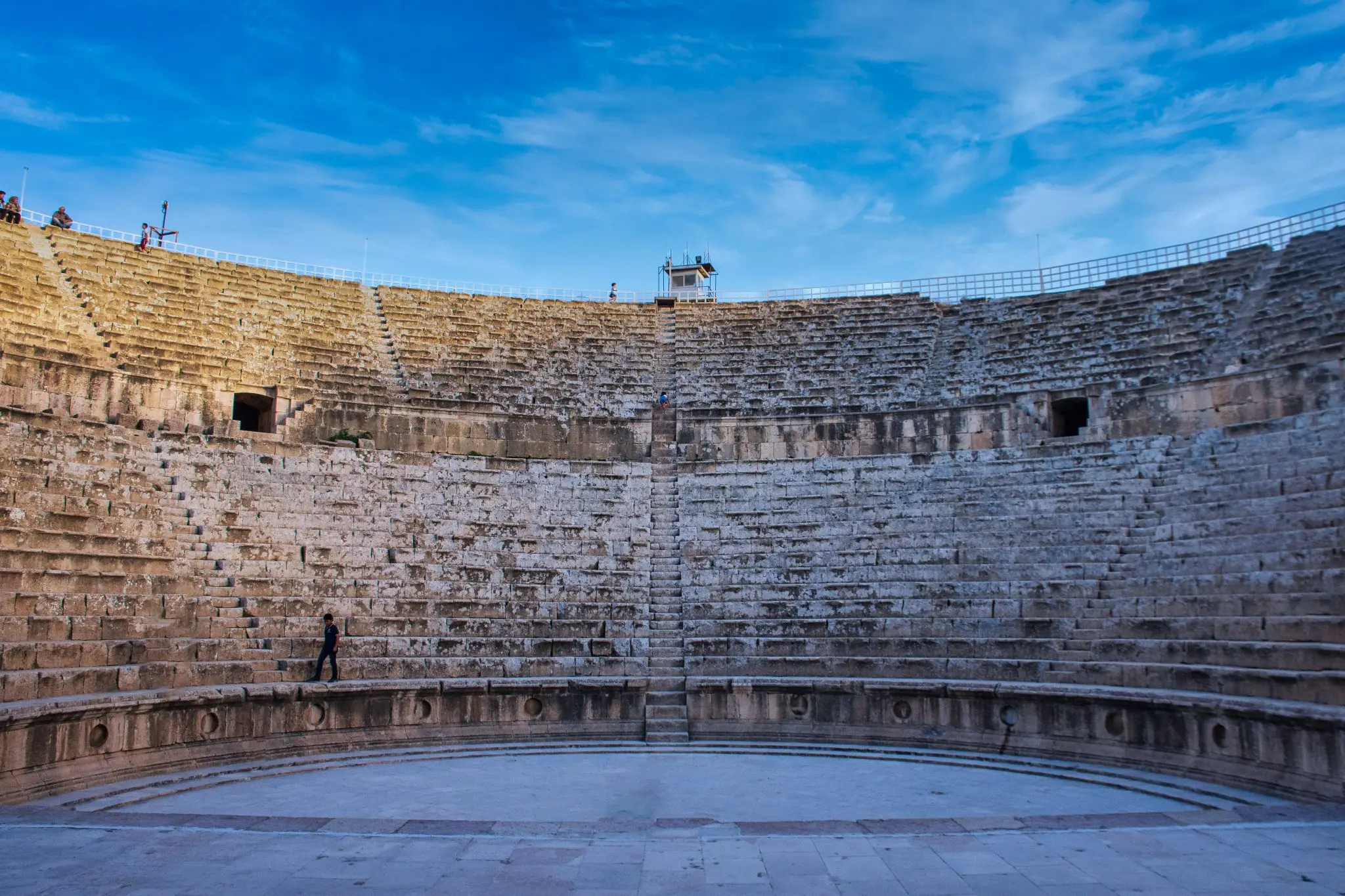
The best time to visit Jerash is during the spring (March to May) and autumn (September to November) when the weather is mild and pleasant, ideal for exploring the ancient ruins. Spring offers a particularly enchanting experience as the surrounding hills bloom with wildflowers, adding a touch of natural beauty to the historical landscape.
Visiting Jerash in autumn, you’ll find fewer tourists, allowing for a more intimate experience of the site.
Early mornings are the best time of day to explore Jerash, providing cooler temperatures and fewer crowds. Additionally, visiting during weekdays rather than weekends can offer a quieter experience, as Jerash is a popular destination for local weekend getaways.
Now that you are all set with my complete guide to Jerash, buckle up and explore one of the most iconic landmarks in Jordan!
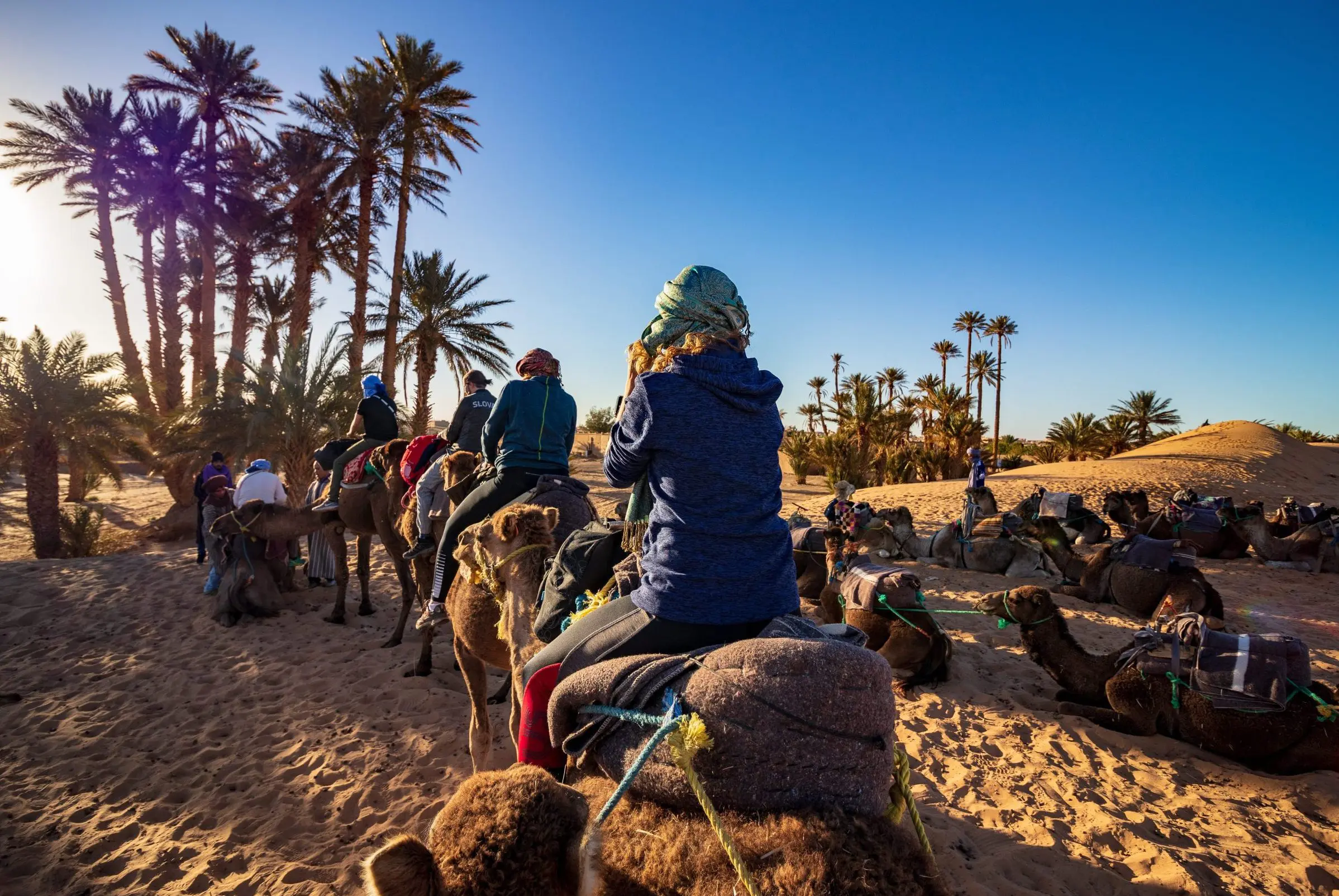 Summer Sale: 45% Off
Summer Sale: 45% Off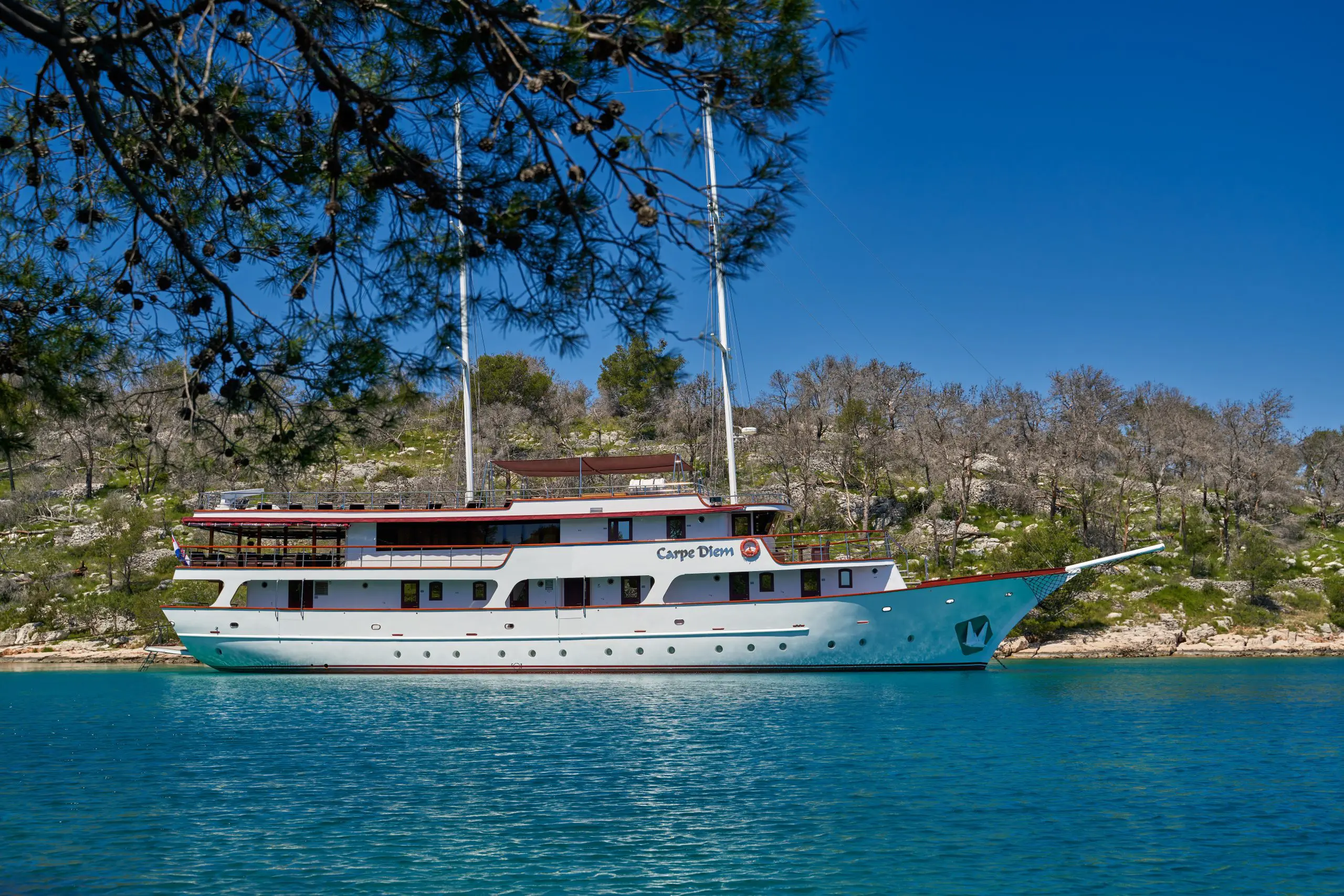 Croatia Sailing : 45% Off
Croatia Sailing : 45% Off Greece Trips : Save 45%
Greece Trips : Save 45% 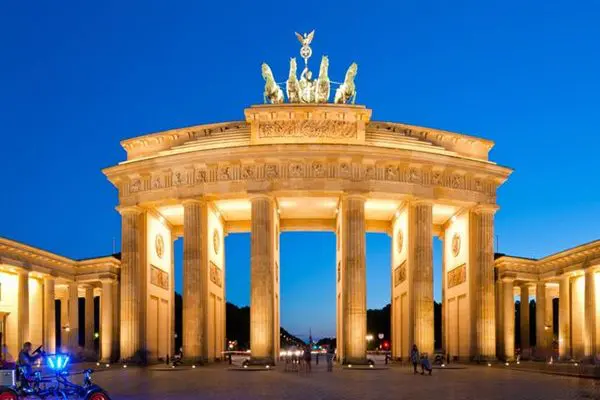 Central & Eastern Europe Tours: 45% Off
Central & Eastern Europe Tours: 45% Off  Why Travel Talk
Why Travel Talk Travel Talk Blog
Travel Talk Blog Responsible Travel
Responsible Travel Fair Travels with Travel Talk
Fair Travels with Travel Talk